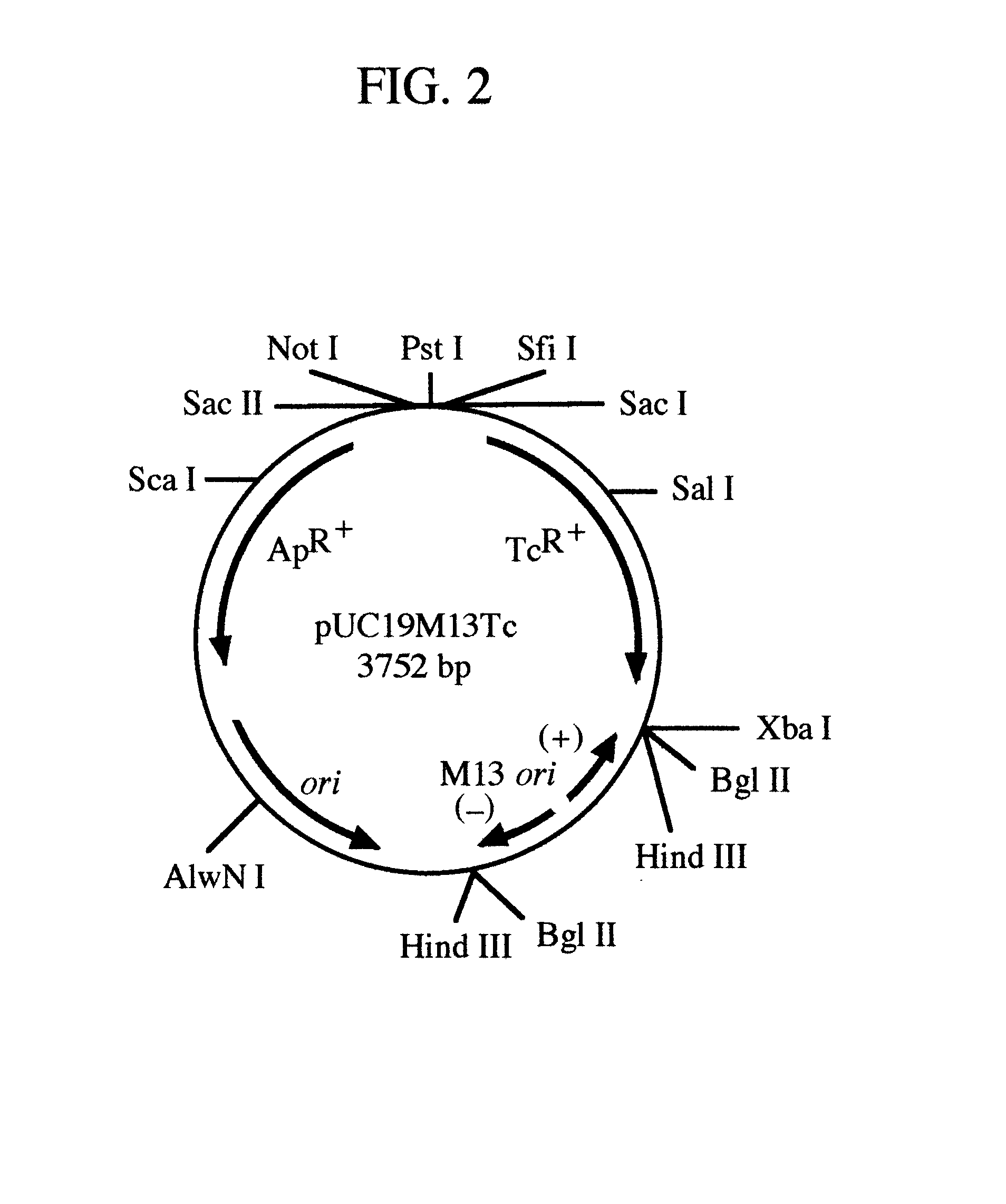pREM: a positive selection vector system for direct PCR cloning
- Summary
- Abstract
- Description
- Claims
- Application Information
AI Technical Summary
Benefits of technology
Problems solved by technology
Method used
Image
Examples
Embodiment Construction
General Techniques of Molecular Biology
Unless otherwise indicated, the molecular biology techniques related to this invention are described in Sambrook et al., Molecular Cloning: A Laboratory Manual, Cold Spring Harbor Laboratory, Cold Spring Harbor, N.Y., 1989.
PCR was performed for enzymatic amplification of a targeted DNA fragment (Saiki et al., 1985, Science 230, 1350-1354; Mullis and Faloona, 1987, Method Enzymol. 155, 335-350) using a DNA thermal cycler (Perkin Elmer Cetus, Foster City, Calif., USA) according to the manufacturer's instructions. The thermostable DNA polymerases and the PCR kit were used according to the recommendations of the respective suppliers (Perkin Elmer Cetus, Foster City, Calif., USA; Stratagene, La Jolla, Calif., USA).
The restriction endonuclease cleavage of DNA was performed according to the specifications of the manufacturers (New England Biolabs, Beverly, Mass., USA; Stratagene, La Jolla, Calif., USA). After restriction digestion, the restriction end...
PUM
| Property | Measurement | Unit |
|---|---|---|
| Electrical resistance | aaaaa | aaaaa |
| Frequency | aaaaa | aaaaa |
| Fluorescence | aaaaa | aaaaa |
Abstract
Description
Claims
Application Information
 Login to View More
Login to View More - R&D
- Intellectual Property
- Life Sciences
- Materials
- Tech Scout
- Unparalleled Data Quality
- Higher Quality Content
- 60% Fewer Hallucinations
Browse by: Latest US Patents, China's latest patents, Technical Efficacy Thesaurus, Application Domain, Technology Topic, Popular Technical Reports.
© 2025 PatSnap. All rights reserved.Legal|Privacy policy|Modern Slavery Act Transparency Statement|Sitemap|About US| Contact US: help@patsnap.com



